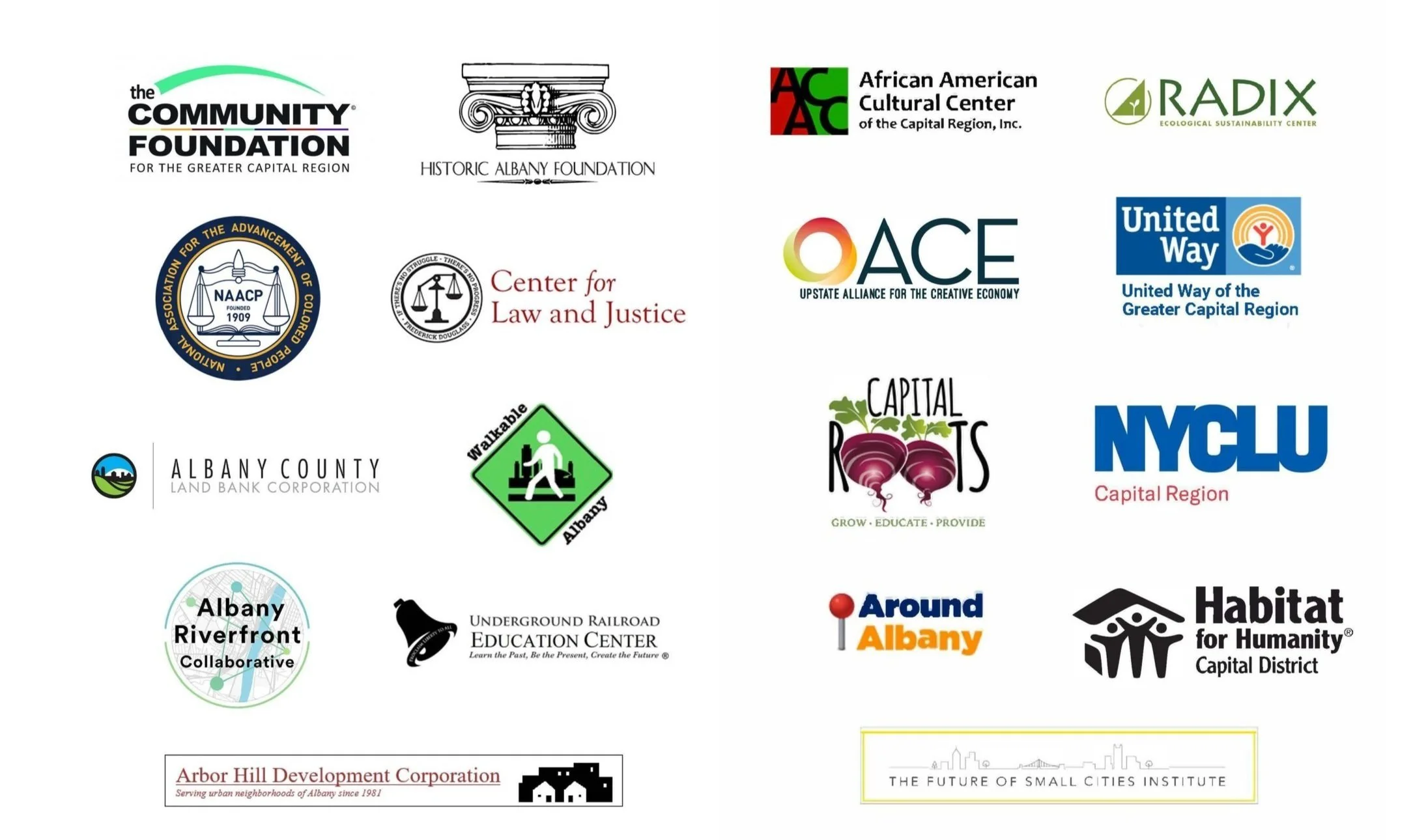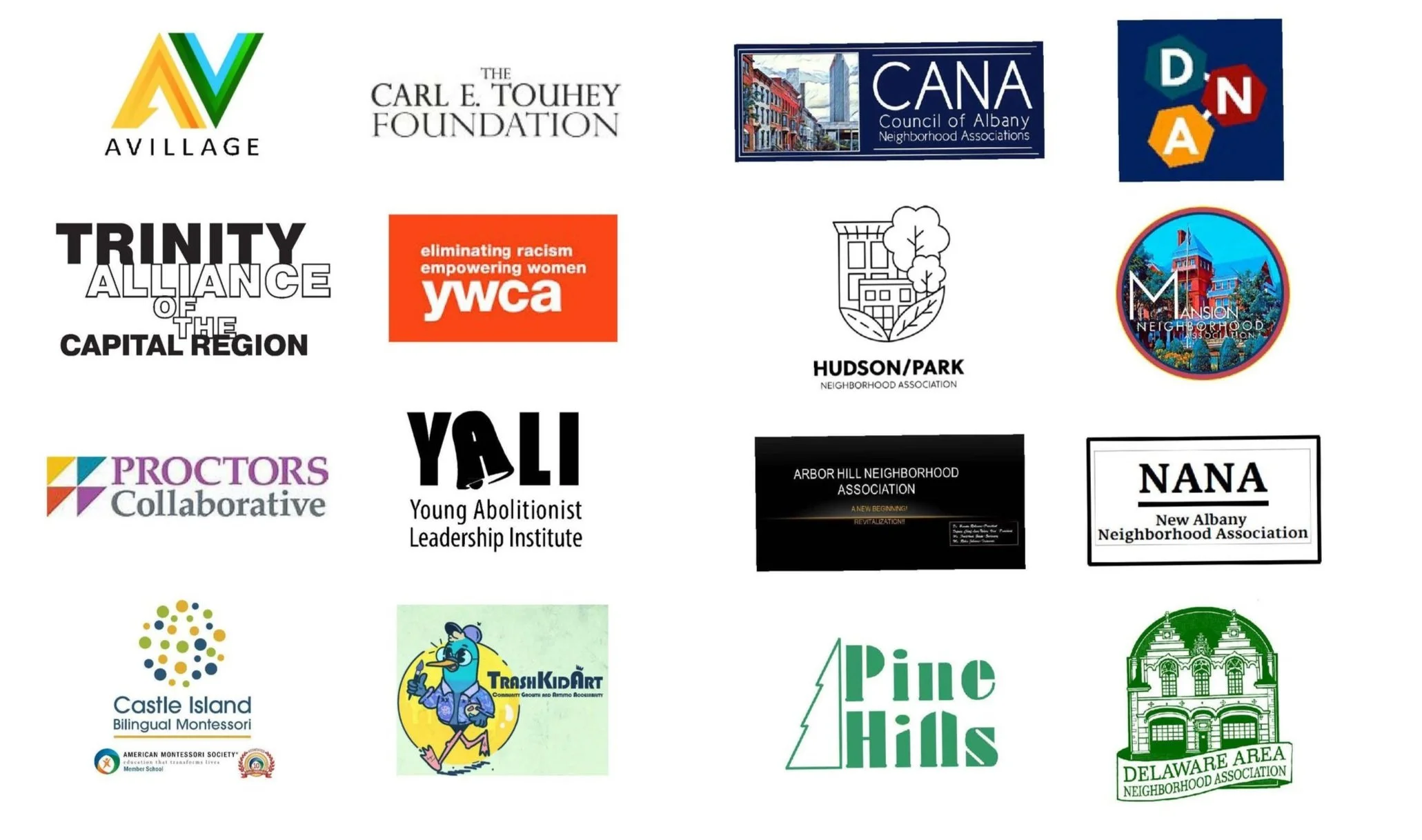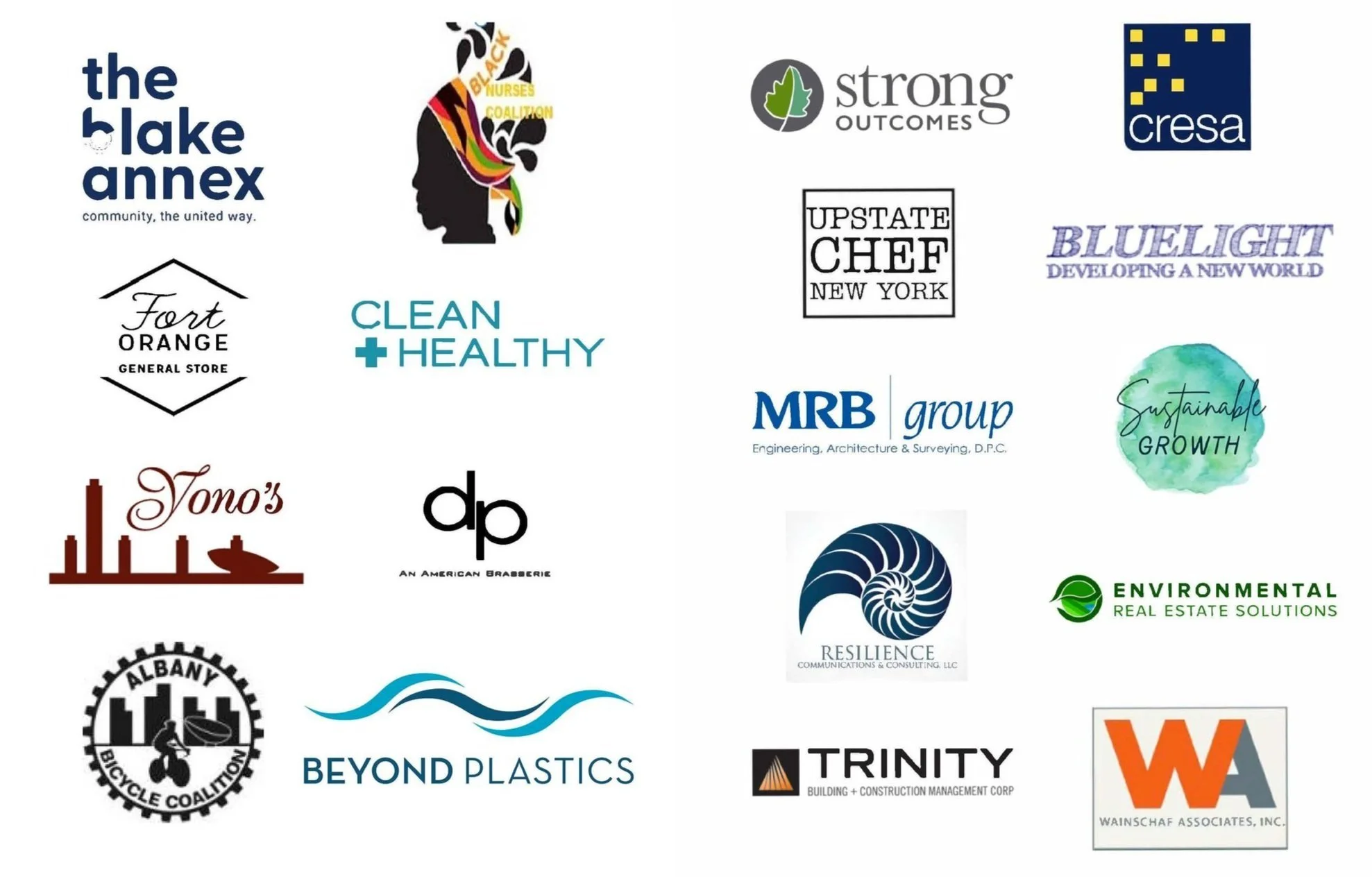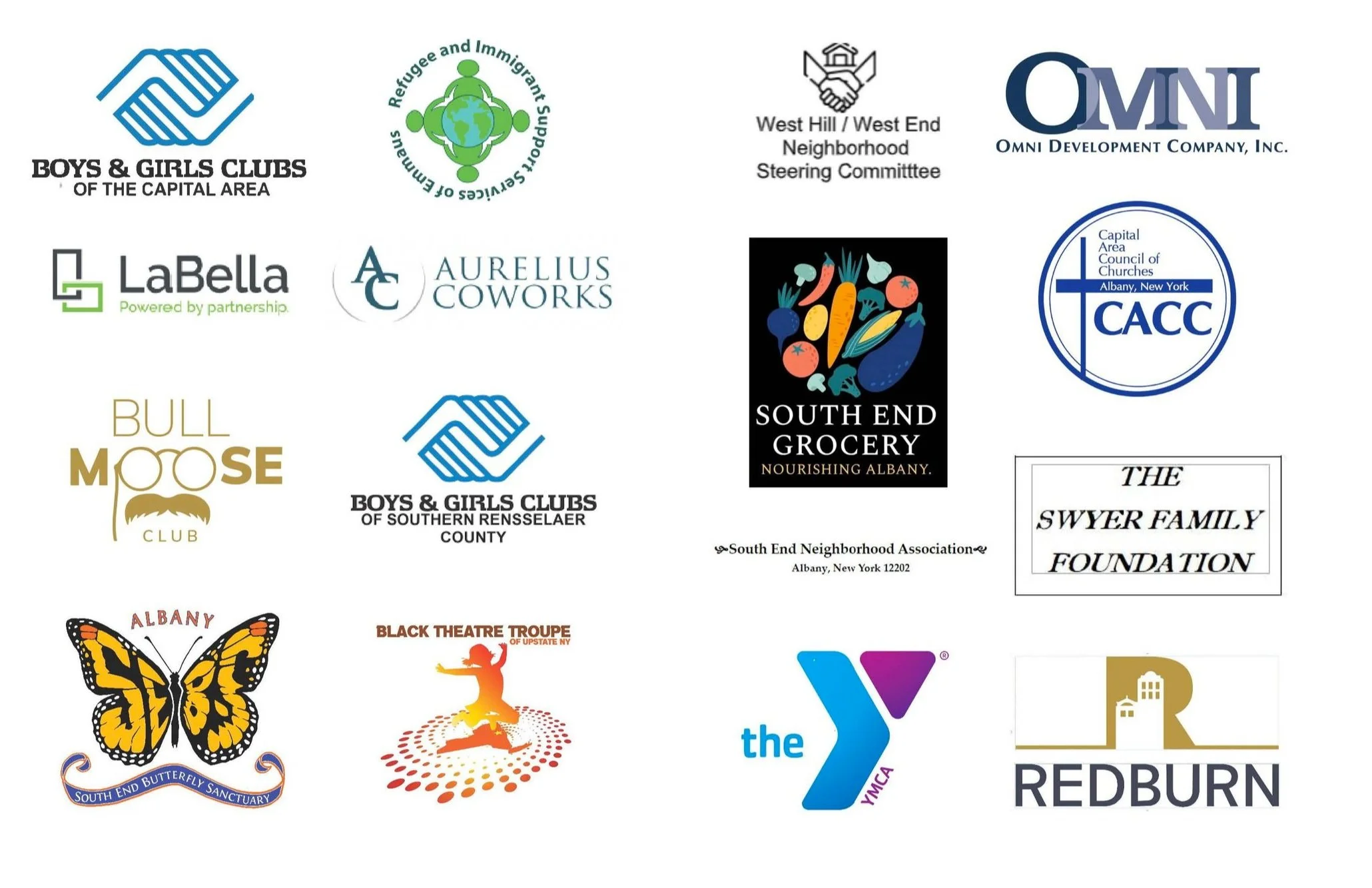Together We Can
I-787 Study Opens New Paths to Reconnection
We present a Call to Action: To design effectively for change, we must change how we design.
The state Department of Transportation (NYS DOT) has budgeted $5 million to conduct a study regarding the viability and options in replacing I-787 in a way that opens access to the Hudson Riverfront and reconnects neighborhoods. This is a significant opportunity to right some of the infrastructure wrongs of the past.
Over the years, New York State’s capital city has been fraught with planning processes that concentrate decision-making in just a few hands. We have all been forced to live with results bordering on dystopian.
In the 1960s, monumental futurism was imposed on the city without regard for its citizens’ wishes or well- being. The Empire State Plaza and its hulking elevated highway network led to the wholesale destruction of entire downtown communities, neighborhoods, and proud family-owned businesses, displacing thousands of struggling residents—mostly black and those of varying immigrant backgrounds.
Fifty years later, state government had learned exactly nothing from this planning debacle and its widely disliked design. After earlier leadership bought land and buildings near the riverfront to make way for a convention center, state leaders had the center built elsewhere, leaving another lifeless void in the heart of downtown. Locals call it the Parking Lot District.
Today we are facing a new redevelopment opportunity. Like many urban highways throughout the U.S., I-787 is reaching the end of its lifespan. To date, 39 U.S. cities—including Buffalo, Rochester, and Syracuse—have opted to eliminate these high-maintenance money pits in favor of roadway redesign. Like most Albany residents, we want to see the overbuilt, tax-burdensome downtown highway replaced. We also believe that the design process itself must be replaced, from the top-down state-driven control of yesteryear to one of community co-creation.
This is a complex challenge that involves not only the elevated highway but also a critical freight rail line that runs through its middle, vehicle and vessel accommodating bridge design, and bike and pedestrian thoroughfares. The project also requires carbon mitigation and climate adaptation measures, per state law. Including a range of regional and community-based partners in the planning process is critical to the long- term results.
Three redesign concepts are in discussion throughout our communities, and each is creating curiosity and helping us to discover what ultimately matters to our neighbors, ecological systems, economic systems, and vision of what a thriving Albany looks like. These include high-level concepts such as lowering the highway and capping it with parkland, creating a canal-like system to bring the river into former streets of Albany with the intent of increasing tourism and river access, and a boulevard approach that brings highway ramps to street level, reduces speeds, reduces road widths, introduces center islands and trees, and which focuses on support and balance of pedestrian, transit, commercial, and community needs.
These concepts are not mutually exclusive, and we look forward to many more ideas emerging as we connect with our communities, experiences, and co-created vision of what is possible. Frankly, it should surprise no one if the best designs incorporate elements of all three, for each idea builds on different perspectives and priorities, from water management and environmental health to recreation and economic development.
Whatever design emerges from this process, we should avoid the centralizing tendencies of mid-20th-century planning that funnels land redevelopment into One Big Thing: one giant plaza, one stadium, one aquarium, one park, managed by one developer (or the city itself). A centralizing idea may be necessary, but it should catalyze a variety of design elements that unleash the entire community’s maximum potential. What we need is widely distributed civic and economic power spread across multiple streets with many smaller landowners, developers, builders, and businesses. To get there we need a vigorous, all-encompassing, iterative, community planning process.
Great creative promise is embedded in the lived memory of the residents, and their current descendants, who were thrown out of their homes and workplaces to make way for I-787. These “communities of low status,” as some advocates call them, still struggle in the city and in immediate surrounding communities, including Rensselaer. As the redesign process re-opens land for development, they are needed as co-producers of plans and policies that not only open downtown to the riverfront but that reconnect the communities displaced by I-787 to downtown and to one another.
Merely consulting or “engaging” these citizens is insufficient. Their talent and ground-level knowledge are essential to laying the foundation for intergenerational wealth formation, affordable housing development, environmental justice interventions, and community amenities such as healthy food choices, childcare, and recreational safety. They are also critical partners in building systemic safeguards against displacement and gentrification, such as land trusts and community benefit agreements.
Regional and municipal government agencies serving the greater metropolitan area, and the many commuters who have a strong stake in the outcome, must also be welcomed into the process early and consistently. These include the Capital District Transportation Committee, the Capital District Regional Planning Commission, the Capital District Transportation Authority, Albany County, and the appropriate offices within the area’s state and city governments. The public servants who staff these entities have institutional knowledge and resources that are indispensable to the civic work of co-creation that lies ahead.
The most important element of the vision design process, from conception to conclusion, is the inclusion of everyone in it, equally and with no exceptions. Without this commitment, history has shown us that the result will most likely be a tone-deaf, stagnant, one-note solution dropped on the community and its people.
We are not offering design solutions. We request an open, honest, and transparent design process arising from the conversation around the table, not bestowed in a finished state from the podium. It should be complex, inclusionary, and nuanced enough to reconfigure a new urban landscape worthy of the troubles we face and the people it will ultimately impact the most.
A planning process reflects the priorities of a geographic place and a place in time. Our time is now. Let’s plan together, openly, respectfully, and freely, with faith in one another, knowing the design that emerges from the process will birth the best Albany for all.








